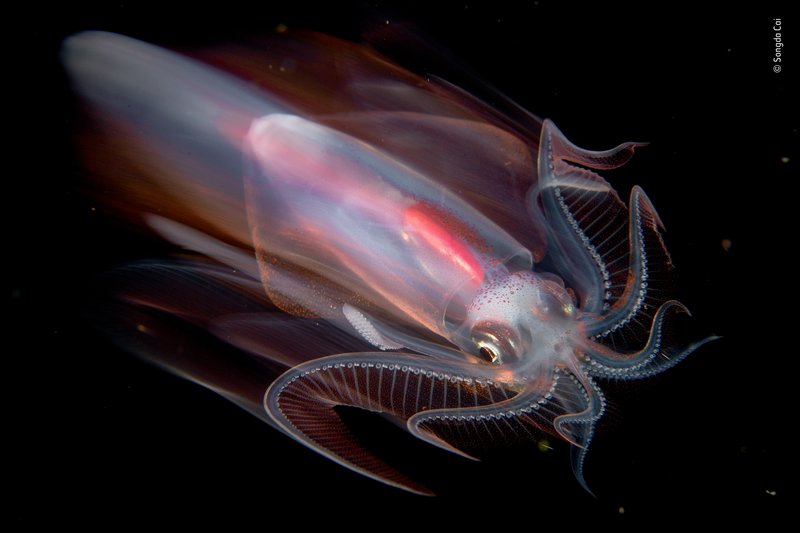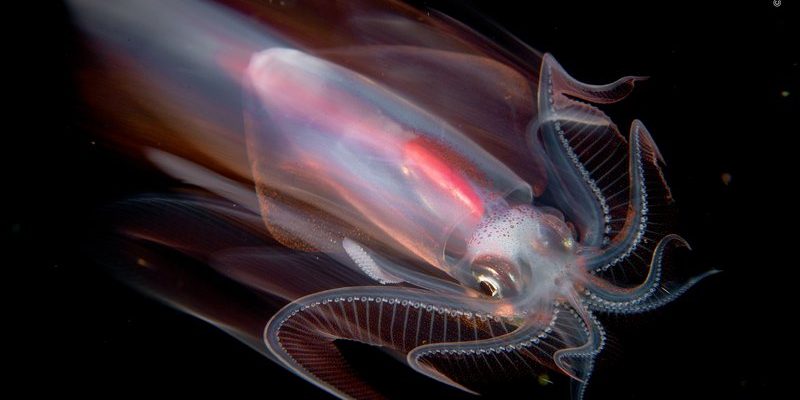
Imagine exploring the depths of the ocean, where strange creatures glide past in a beautiful dance of agility and color. Among them, squid stand out as some of the most fascinating inhabitants of the sea. They’re not just your average marine animals; these cephalopods are equipped with a unique set of features that make them incredibly interesting. With their soft, elongated bodies and tentacles, squid can be both mysterious and mesmerizing.
Squid are part of the mollusk family, which also includes octopuses and cuttlefish. While they share some similarities with these relatives, squid have their own distinct characteristics that set them apart. They have a streamlined body perfect for rapid swimming, and their ability to change colors adds a touch of magic to their underwater presence. So let’s dive in and explore the life of squid, their behavior, habitat, and more!
What is a Squid?
Squid are marine animals belonging to the class Cephalopoda, which means “head-foot.” This classification aptly describes their unique anatomy: their head is at the front, while their tentacles extend from the body. Typically, a squid has eight arms, which can be used to grasp prey, and two longer tentacles that help them catch food. Their bodies are soft and malleable, allowing them to squeeze into tight spaces, adding to their adaptability.
Did you know that squid come in different sizes? Some can be as small as a few inches long, while others can grow over 40 feet in length! This makes them a very diverse group within the marine ecosystem. They’re also known for their sophisticated nervous systems and remarkable intelligence, as they can learn behaviors and have excellent problem-solving skills. When you think of squid, picture agile hunters of the deep with a level of intelligence that surprises many.
Habitat of Squid
Squid are found in various marine environments, from shallow coastal waters to the deep sea. They thrive in both temperate and tropical oceans around the world. Some species prefer the open ocean, while others can be found in more confined spaces like estuaries or the ocean floor. They’re also known to inhabit places like coral reefs and even undersea vents, showcasing their adaptability to different conditions.
Their habitat choice often depends on food availability and the specific adaptations of each species. Some squid prefer warmer waters, while others can tolerate cooler temperatures. No matter where they are, they use their incredible swimming abilities to navigate their environment, often creating stunning displays of speed and maneuverability.
The Anatomy of a Squid
Squid have a remarkable anatomy that allows them to be effective predators. Their body consists of three main parts: the head, the mantle, and the arms. The mantle houses essential organs and is responsible for propulsion through the water. By expelling water from the mantle, squid can move quickly, making them agile hunters.
Their arms are lined with suckers that help grip prey. This is where it gets interesting: some species of squid have specialized suckers that can even detect chemicals, helping them locate food. Additionally, squid possess a beak similar to that of a parrot, which allows them to bite and tear into their prey. With all these adaptations, squid are well-prepared to navigate their environment and hunt efficiently.
Diet and Feeding Habits
When it comes to their diet, squid are carnivorous hunters. They primarily feed on fish, crustaceans, and sometimes even other squid. Using their keen eyesight, they catch prey with their quick movements and grasping arms. Squid are also known for their unique hunting strategy: they can change colors and produce light, which can confuse or mesmerize their prey, making it easier to catch.
Interestingly, the feeding habits of squid can vary significantly based on their species and habitat. Some squid will ambush their prey, while others may chase it down. Their hunting technique is both sophisticated and effective, allowing them to thrive in various marine environments.
Reproduction and Life Cycle
Squid have a fascinating reproductive cycle. Most species are known to spawn during specific seasons, laying eggs in clusters. Instead of parental care, squid often leave the eggs to hatch on their own. Once the tiny squidlings emerge, they look remarkably like miniature versions of adults and begin their journey in the ocean.
The lifespan of squid varies with the species, with some living only a year or two, while others can last a decade. Their short life cycles often lead to rapid population changes, influenced by environmental factors and predation. This strategy allows squid to reproduce quickly, ensuring their species’ survival amid changing ocean conditions.
Squid Behavior and Intelligence
Squid exhibit a range of fascinating behaviors that highlight their intelligence. They are known to communicate through color changes and body movements, which can convey social signals or warnings to potential predators. In some cases, squid will even engage in complex mating displays to attract partners, often showcasing their ability to change colors in stunning patterns.
Research suggests that squid are capable of learning and adapting to their environment. They can solve problems and demonstrate curiosity, which is rather impressive for an animal of their kind. This intelligence makes squid not just remarkable hunters but also intriguing creatures. Watching them in action can feel like witnessing a delicate dance of survival and instinct.
Interesting Facts About Squid
| Fact | Details |
|---|---|
| Number of Species | There are over 300 recognized species of squid. |
| Speed | Squid can swim at speeds up to 25 miles per hour! |
| Ink | Squid have an ink sac that they use to escape predators by creating a smokescreen. |
| Color Change | They can change colors rapidly for communication or camouflage. |
| Habitat Depth | Some species live in the deep sea over 2 miles down! |
Threats and Conservation
Like many marine creatures, squid face various threats. Overfishing, climate change, and pollution are significant concerns affecting their populations and habitats. As ecosystems change, so does the availability of food and safe breeding grounds. Squid play an essential role in marine food webs, and their decline can have far-reaching effects on other species.
Conservation efforts are vital to ensure the survival of squid and their ecosystems. Sustainable fishing practices, habitat protection, and pollution control can help to mitigate some of the challenges they face. Additionally, raising awareness about the importance of squid in marine ecosystems can encourage responsible management of our ocean resources.
Squid are truly remarkable creatures that illustrate the beauty and complexity of marine life. Their unique anatomy, fascinating behaviors, and important role in the ocean ecosystem make them worthy of our respect and protection. By learning more about squid, we can better appreciate the wonders of the ocean and the need to preserve these incredible animals for generations to come.
FAQ
How do squid defend themselves from predators?
Squid have several defenses against predators. One of the most famous is their ability to expel a cloud of ink, which creates a smokescreen to confuse or distract attackers. This gives them a chance to escape. Additionally, their quick swimming and ability to change color can help them blend into their surroundings, providing camouflage from predators. Some species also have the ability to go deep into the ocean, away from danger.
Are all squid the same size?
No, squid vary greatly in size. While some species are just a few inches long, others can grow much larger. For instance, the giant squid can reach lengths exceeding 40 feet, making it one of the largest invertebrates on the planet. This diversity in size depends on the species and their specific adaptations to their environments.
Can squids change color?
Yes, squid can change color rapidly, which they do using special cells in their skin called chromatophores. This ability helps them communicate with other squid, camouflage themselves from predators, or attract mates. The color change is usually a fascinating display and can happen in seconds, making it one of their most captivating features.
What do squid eat?
Squid are carnivores and typically eat fish, crustaceans, and sometimes other squid. They use their speed and agility to catch prey, often using their long tentacles to grasp and hold onto it tightly. This hunting method makes them effective predators in their marine environment.
How long do squid live?
The lifespan of squid varies by species. Some smaller squid might live only a year or two, while larger species can live for several years. Factors like environmental conditions, predation, and resource availability can influence their life expectancy. Rapid reproduction is also seen among squid to help maintain their populations despite their short life spans.
Are squid intelligent animals?
Yes, squid are considered to be quite intelligent among invertebrates. They have complex nervous systems and exhibit behaviors that suggest problem-solving and learning abilities. For example, they can adapt their feeding strategies based on the type of prey available and can even communicate with one another using color changes.
Do squid have any natural predators?
Yes, squid have several natural predators, including larger fish, birds, and marine mammals like seals and dolphins. Their quick swimming ability and camouflage help them evade these predators. However, they are an essential food source for many marine animals, contributing to the balance of their ecosystems.
How do scientists study squid?
Scientists study squid using various methods, including observation in their natural habitats, laboratory research, and genetic analysis. By understanding their behavior, biology, and role in the ecosystem, researchers can gain insights into their health and the health of the ocean. Innovative techniques like underwater cameras and tracking devices also provide valuable data about their movements and habits.
What role do squid play in the ecosystem?
Squid play a vital role in ocean ecosystems. As predators, they help regulate the populations of their prey, which includes fish and crustaceans. Additionally, they serve as important food sources for larger marine animals. Their presence in the food web supports overall ocean health, influencing other species and the quality of the marine environment.
Can squid be kept in aquariums?
While it’s possible to keep some smaller species of squid in aquariums, it requires specialized care. Squid are known for their intelligence and can be quite challenging to keep due to their specific habitat needs and diet. They also have relatively short lifespans, which can make them less suitable as long-term pets. However, some aquarists enjoy the challenge and the opportunity to observe these incredible creatures up close.

